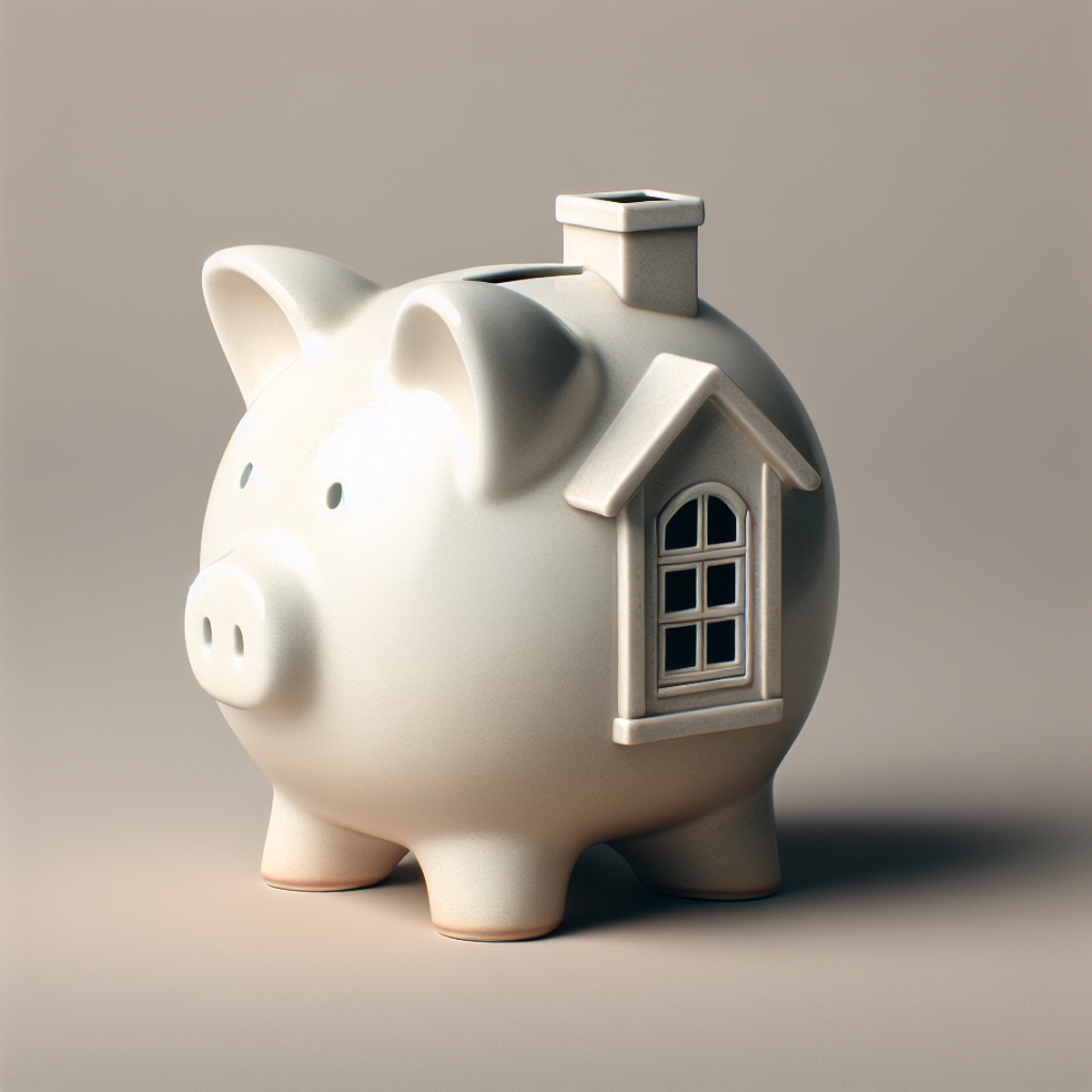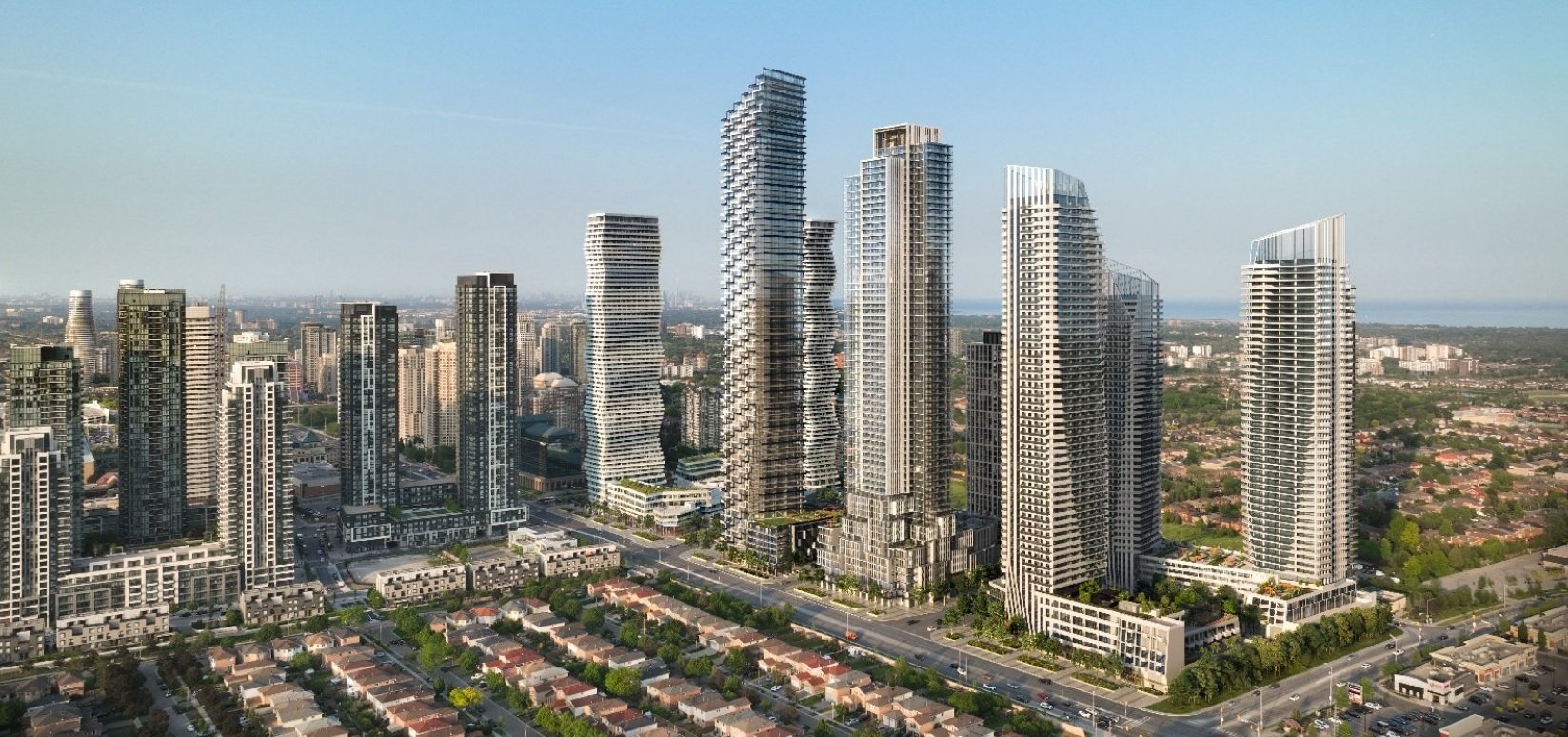Embarking on the journey of buying your first home in Canada can be as exciting as it is daunting, especially for newcomers. Navigating through a new country’s real estate market comes with its unique set of challenges, from understanding local regulations to securing financing. This guide aims to demystify the process, providing you with an in-depth look at the Canadian real estate landscape.

What You’ll Learn
You’ll discover the essential steps involved in acquiring property, including:
- Learning about Canadian mortgages
- Finding the right location for your new home
Additionally, you’ll gain access to valuable tips tailored for newcomers, helping you make informed decisions and avoid common pitfalls.
Embrace the opportunity for homeownership in Canada with confidence. Whether you’re looking for a bustling metropolitan vibe or the serenity of suburban life, there’s a place that feels like home.
To jumpstart your search, consider browsing through an array of listings on condominiums.ca—a trusted real estate platform renowned for its comprehensive collection of properties suited for various tastes and budgets. Get ready to turn the dream of owning a home in Canada into a reality.
Understanding the Canadian Real Estate Market
The Current State of the Canadian Real Estate Market
The real estate market in Canada has been experiencing strong growth and resilience, despite global economic uncertainties. Low-interest rates and high demand for housing have led to a steady increase in prices, making homeownership an attractive option for many newcomers. It’s important to work with a knowledgeable real estate agent to navigate through this landscape.
Key Points:
- Prices of homes in Canada have been steadily increasing, with detached homes being the most expensive type of property.
- The current market trends show that it’s a seller’s market in most regions, with low inventory levels and high demand from buyers.
- Housing market conditions vary between provinces and cities, as well as different types of properties.
Statistics:
- As of the third quarter of 2023, the national average price for homes sold was about $695,000 CAD, up 12.6% from the same period last year.
- Detached homes remain the most expensive type of property, with an average sale price exceeding $1 million CAD in some major cities.
Regional Market Trends:
- In Vancouver, there’s a persistent demand for single-family homes resulting in fierce competition among buyers.
- Toronto’s real estate market is characterized by condo sales due to their relative affordability compared to detached houses.
- Smaller cities like Ottawa and Hamilton have seen increased interest from buyers seeking more affordable options outside of major urban centers.
Popular Property Types:
- Detached homes are seeing a surge in popularity due to their size and privacy.
- Condominiums remain a popular choice among first-time homebuyers due to their relative affordability.
- Townhouses are gaining traction as they provide a balance between space and cost.
Recognizing these market conditions is fundamental when starting your home-buying journey in Canada. Such insights can help you make informed decisions that align with your financial capabilities and housing preferences.
The Impact of Immigration on Housing Demand in Canada
Immigration has a substantial impact on housing demand in Canada. The country welcomes hundreds of thousands of newcomers each year, leading to increased demand for housing. This surge in demand is particularly evident in major cities like Toronto, Vancouver, and Montreal.

Key Points:
- One in five homes in Canada is purchased by newcomers.
- Immigration not only affects big cities but also smaller towns and cities experiencing growth in their housing markets.
Major cities like Toronto, Vancouver, and Montreal are popular destinations for immigrants due to their vibrant economies and diverse cultural communities. This influx of newcomers into these cities invariably leads to a surge in demand for housing, pushing prices up.
However, this pattern is not only limited to big cities. Many newcomers are also settling in smaller towns and cities, attracted by lower living costs and the promise of a quieter lifestyle. As a result, these areas are experiencing growth in their housing markets.
Understanding the dynamics between immigration and housing demand can provide valuable insights when buying your first home in Canada. It’s worth considering not only current market conditions but also future trends that may influence property values over time.
The Canadian real estate market offers both opportunities and challenges for newcomers. Recognizing the current state of the market and understanding the impact of immigration on housing demand can guide you as you navigate your way towards homeownership.
The Impact of Immigration on Housing Demand in Canada
Immigration plays a pivotal role in shaping the Canadian real estate market. As newcomers arrive, they bring diverse needs and aspirations to the housing landscape, influencing both demand and prices. Understanding the dynamics of how immigration affects the housing market is crucial for those looking to purchase a home.
Immigration Fuels Demand
- Statistics Canada reports that one in every five homes in the Canadian market is purchased by newcomers.
- Major urban centers, such as Toronto, Vancouver, and Montreal, often serve as hubs for immigrants due to extensive job opportunities and established immigrant communities.
- These cities experience a consistent influx of newcomers, which puts upward pressure on housing demand and subsequently, property values.
Housing Market Trends
- The Express Entry system and various Provincial Nominee Programs facilitate a steady stream of skilled workers and their families into the country.
- Programs like International Experience Canada (IEC) and study permits also contribute to short-term residency needs, which can transition into long-term housing demand as temporary residents seek permanency.
Long-Term Market Effects
- The increase in demand for housing due to immigration contributes to new development projects and shapes market trends such as:
- A surge in condominium construction in metropolitan areas
- Development of new suburban communities catering to diverse preferences
- Revitalization of certain neighborhoods attracting international buyers
Current State Insights
- It’s essential for newcomers to understand that the current state of the Canadian real estate market is dynamic:
- Housing preferences may shift as immigration patterns change.
- Regions with high immigration rates might see more competitive bidding and higher prices.
- Certain types of properties, such as family-sized units, may be in higher demand where there are larger immigrant families.
Housing Market Impact
- Immigrants typically seek out communities with a strong presence of cultural ties and services:
- Ethnic enclaves within cities can become hotspots for real estate activity.
- Local amenities, schools, transportation options, and safety are factors that drive immigrant housing decisions.
By recognizing these factors, newcomers can make informed decisions when navigating the Canadian real estate market. The key is to anticipate housing demands based on immigration trends and plan accordingly.
A Guide to Buying Your First Home in Canada
Embarking on the journey of buying a home in Canada can be both exciting and daunting. The process involves several steps, which we will break down for you. The first step is understanding the basics of Canadian mortgages.
Step 1: Learn About Canadian Mortgages
When buying a home, most people need to take out a mortgage. This is essentially a loan that you use to purchase your property, which you then pay back over a certain number of years.
Types of Mortgages Available in Canada
In Canada, there are primarily two types of mortgages:
- Fixed-Rate Mortgages: The interest rate for this type of mortgage remains constant throughout the term. It provides stability and predictability since your monthly payments stay the same.
- Variable Rate Mortgages: Unlike fixed-rate mortgages, the interest rate for these can fluctuate based on market conditions. While they can be riskier, they tend to offer lower interest rates than fixed-rate mortgages when the market is stable or declining.
Mortgage Affordability
Understanding how much you can afford in terms of a mortgage is crucial before you start house hunting. This will help prevent falling in love with a house only to find out it’s outside your budget.
Scotiabank offers a mortgage affordability estimation tool that can give you an idea of what kind of home price fits within your budget. This tool takes into account your income, debt, and living expenses.
Assessing your mortgage affordability also involves considering the down payment you’re able to make. In Canada, the minimum down payment generally ranges between 5% and 20% of the property’s purchase price. However, if this amount is less than 20%, you’ll need to purchase mortgage default insurance.
Keep in mind that your mortgage affordability isn’t just about being able to make monthly payments. You should also consider other expenses related to owning a home, such as property taxes, home insurance, and maintenance costs.
Mortgage Length and Terms
In Canada, mortgages can be amortized over periods of up to 30 years. However, the mortgage term, which is the length of time you commit to the conditions of the mortgage contract with your lender, is usually much shorter. Common mortgage terms range from 1 to 5 years.
At the end of your term, you’ll renew your mortgage with the same lender or switch to a different one. At this point, you can renegotiate your interest rate and other terms of your mortgage contract.
Understanding Canadian mortgages is an essential first step in your home buying journey. By comprehending what you can afford and what kind of mortgage suits your situation best, you can navigate the Canadian real estate market with confidence.
Step 2: Consideration When Choosing a Location and Type of Home
When you’re navigating the steps to buying a home in Canada, understanding your preferences for a community and the type of home that suits your lifestyle is critical. The choices you make here set the foundation for your future as a homeowner.
Choosing a Community
Selecting the right community involves multiple considerations:
- Employment Opportunities: Proximity to work can save you time and money. Look for communities with thriving job markets in your field.
- Education: If you have children, local schools’ quality will be a significant factor. Research their reputation and performance.
- Transportation: Accessibility to public transportation, major highways, and walkability affect daily life convenience.
- Cultural Fit: You should feel at home in your neighborhood, so consider the cultural activities, cuisine, places of worship, and community events available.
- Healthcare Services: Easy access to hospitals and clinics ensures peace of mind for healthcare needs.
- Safety: Check crime statistics for potential neighborhoods to ensure your family’s safety.
Types of Homes in Canada
Canada offers a variety of home types, each with its own set of advantages and challenges:
- Condominiums:
- Pros: Affordable entry point into homeownership; low maintenance; amenities like gyms and pools are often included.
- Cons: Condo fees can increase; less privacy; potential for special assessments for building repairs.
- Single-Detached Homes:
- Pros: More space and privacy; full control over property modifications.
- Cons: Higher purchase price; more maintenance responsibilities.
- Semi-Detached Homes:
- Pros: Often more affordable than detached homes; may have similar benefits like private yards.
- Cons: Shared walls can mean less privacy; potential disputes with neighbors about shared property areas.
- Townhouses:
- Pros: A balance between the affordability of condos and the space of single homes; often part of communities with shared amenities.
- Cons: Homeowners’ association fees; rules on exterior changes; close proximity to neighbors.
- Duplex/Triplex:
- Pros: Opportunity to rent out one or more units for income support.
- Cons: Being a landlord comes with additional responsibilities; potential issues with tenants.
Mortgage Affordability Estimation
Before setting your heart on a location or home type, use mortgage affordability estimation tools offered by financial institutions like Scotiabank to understand how much you can comfortably spend. This step is crucial because it influences not only where you can afford to live but also the type of home that aligns with your financial situation. Take advantage of our Mortgage Calculator also to determine an approximation of payments.
Each type of home carries different costs beyond the purchase price, such as property taxes, utilities, insurance, and maintenance expenses. Factor these into your overall budget when considering mortgage affordability.
Remember that while finding the perfect community and home type is essential, ensuring it aligns with your financial capabilities will set you up for long-term success as a homeowner in Canada. As you consider these factors carefully, you are better prepared for the subsequent stages involved in purchasing your first home.
Step 3: Seeking Support as a First-Time Home Buyer
As a newcomer to Canada, navigating the real estate market may seem overwhelming. But fear not, there are numerous support programs and resources available specifically designed to assist first-time home buyers like you.
1. The First Time Home Buyer’s Plan
One such program you can leverage upon is the First Time Home Buyer’s Plan. This is an initiative by the Canadian government that allows you to withdraw up to $35,000 from your Registered Retirement Savings Plan (RRSP) to buy or build a qualifying home. If you’re buying with someone else who is also eligible, each of you can withdraw up to $35,000 — meaning a potential combined sum of $70,000 could be accessed for your home purchase.
Here’s what makes this program truly advantageous for newcomers:
- The withdrawal is tax-free. Unlike regular RRSP withdrawals, the amount taken out under the First Time Home Buyer’s Plan isn’t subject to tax — as long as you repay it within a 15-year period.
- It increases your down payment, helping you secure better mortgage rates and potentially saving you thousands in mortgage default insurance premiums.
- It doesn’t restrict you from qualifying for other homeowner grants and programs, which means even more financial support.
However, keep in mind that this plan requires repayment. Beginning the second year after withdrawal, annual repayments are required until the total amount is fully repaid. If you fail to repay an amount for a given year, it will be added to your taxable income for that year.
2. Other Support Programs
Additionally, there are other support programs for first-time homebuyers in different provinces and territories. For example:
- In Ontario, there’s the Land Transfer Tax Rebate, which refunds the cost of land transfer tax up to $4,000 — effectively covering it entirely for homes priced at $368,000 or less.
3. Mortgage Affordability Calculator
Another beneficial tool that newcomers can take advantage of is the Mortgage Affordability Calculator offered by financial institutions like Scotiabank. This tool provides an estimation of how much mortgage you can afford based on your income, expenses, and chosen mortgage details. It’s a handy way to gauge your financial capabilities and set realistic expectations while house hunting.
Remember, buying a home is not just about the upfront cost but also about being able to manage ongoing costs such as mortgage payments, property taxes, insurance, and maintenance over the long term. Therefore, it’s essential to understand these aspects and plan accordingly.
Step 4: Making an Offer and Securing a Mortgage
When you are ready to buy your first home in Canada, understanding the steps to making an offer on a property and securing a mortgage is crucial. You need to navigate these processes carefully to increase the likelihood of homeownership success.
Making an Offer on a Home
To make a competitive offer, consider these steps:
- Research Recent Sales: Look at similar properties in the area that have sold recently. This information gives you a baseline for your offer.
- Consult with Your Real Estate Agent: They can provide insights into the current market conditions and help determine an appropriate offer amount.
- Evaluate Your Budget: Ensure your offer aligns with what you can afford, considering both the purchase price and ongoing costs of homeownership.
- Prepare Your Offer: This includes details like the price you’re willing to pay, deposit amount, desired closing date, and any conditions such as a home inspection or financing.
- Submit Your Offer: Your real estate agent will present it to the seller’s agent or directly to the seller if it’s a private sale.
- Negotiate: Be prepared for counteroffers. It’s often a part of the process until both parties reach an agreement.
Mortgage Pre-Approval Process
Before making an offer, obtaining a mortgage pre-approval is essential. Here’s why:
- Financial Readiness: A pre-approval assesses your financial situation and provides an estimate of how much money a lender is willing to loan.
- Competitive Edge: Sellers are more likely to consider offers from buyers who have secured pre-approvals, as it indicates financial reliability.
- Budgeting Accuracy: Knowing your mortgage affordability estimation helps you make offers within your means.
To start the pre-approval process, follow these guidelines:
- Gather Financial Documents: You’ll need proof of income, employment status, assets, debts, and identification.
- Credit Score Assessment: Lenders will check your credit score to evaluate risk – make sure your credit history is in good standing.
- Discuss with Lenders: Meet with potential lenders or mortgage brokers to discuss terms and rates.
- Formal Application: Complete the necessary paperwork for the lender to process your pre-approval.
- Receive Pre-Approval Letter: If successful, you’ll receive a letter stating the amount they’re willing to lend you.
Remember that pre-approval does not guarantee final approval for a mortgage; it’s contingent on factors such as the property appraisal and any changes in your financial situation before closing.
By carefully preparing and proceeding through each step with diligence, newcomers can position themselves strongly when entering negotiations and secure financing that aligns with their home purchasing goals. With a strategic approach to making an offer and securing mortgage pre-approval, you move one step closer to acquiring your first home in Canada.
Step 5: Home Inspection, Finalizing the Sale, and Beyond
When you are steps away from owning your first home in Canada, it’s crucial to understand the role of a home inspection. This step is an indispensable part of the home-buying process, providing you with a professional assessment of the property’s condition.
Home Inspection Process
- Hire a Professional Inspector: Engage a certified home inspector to conduct a comprehensive evaluation of the property. This includes checking for structural issues, electrical systems, plumbing, heating and cooling systems, and any signs of mold or pest infestation.
- Attend the Inspection: You should be present during the inspection. This allows you to see any issues firsthand and ask questions directly.
- Review the Report: After the inspection, review the detailed report that outlines any deficiencies or required repairs. Use this information to negotiate repairs or credits with the seller.
Finalizing the Sale
- Secure Financing: Ensure your mortgage pre-approval is converted into a firm commitment from your lender. Remember to provide them with any additional documents they require promptly.
- Legal Review: Have a lawyer or notary review all contracts before signing. They will also handle the transfer of funds and ensure that title transfers correctly.
- Closing Adjustments: Be prepared for closing adjustments. These could include prepaid property taxes or utility bills by the seller that you need to reimburse on a prorated basis.
Post-Purchase Responsibilities
After finalizing the sale, as a homeowner in Canada, you assume several post-purchase responsibilities:
- Home Insurance: Secure home insurance to protect against loss or damage. Your mortgage lender will require proof of insurance before funds are released.
- Property Taxes: Understand when and how much you need to pay for property taxes. These can often be added to your monthly mortgage payment.
- Maintenance and Repairs: Account for ongoing maintenance costs and save for potential emergency repairs.
- Mortgage Payments: Keep track of your mortgage payments and understand your options should your financial situation change.
By adhering to these steps to buying a home in Canada, newcomers can navigate through the complexities of acquiring their dream home while being well-informed about their mortgage affordability estimation. The Canadian mortgages system can be intricate; hence understanding each phase ensures that you are prepared for both expected and unexpected events throughout homeownership.
With these insights into the home inspection process and finalizing your sale, you’re equipped not only to take ownership but also to maintain and manage your new Canadian home successfully.
Financial Considerations for Newcomers
Delving into the Canadian real estate market requires a firm understanding of specific financial elements. Here, we highlight three essential factors that newcomers should keep in mind.
1. Saving for a Down Payment
This is your investment in your future home. In Canada, the down payment ranges from 5% to 20% of the purchase price as a minimum. For homes priced above $1M CAD, a 20% down payment is necessary. It’s important to start saving early and consider options like the Registered Retirement Savings Plan (RRSP) where you can withdraw up to $35K ($70K for couples) under the First Time Home Buyer’s Plan.
2. Understanding Mortgage Default Insurance
If your down payment is less than 20%, you will need to purchase mortgage default insurance. This insurance protects lenders if you default on your mortgage. Though it adds to your expenses, it also allows you to purchase a home with a smaller down payment.
3. Budgeting for Property Taxes
As a homeowner in Canada, you are required to pay property taxes annually. The amount varies based on your municipality and the assessed value of your property. It’s crucial to factor these recurring costs into your budget.
Getting acquainted with these money matters enhances your readiness to take on the Canadian real estate market confidently. Armed with this knowledge, you’ll be better equipped when making pivotal decisions about purchasing your first home in Canada.
Renting vs. Buying: Making the Right Choice
When you arrive in Canada, choosing between renting and buying a home is a significant decision that requires careful consideration. Each option has its distinct set of pros and cons, particularly for newcomers who may be navigating the Canadian real estate market for the first time.
Pros of Renting
- Flexibility: Renting offers the freedom to move without the commitment of a mortgage, beneficial if you’re uncertain about your long-term plans or job stability.
- Lower Initial Costs: Typically, renting involves lower upfront costs compared to buying, with no need for a substantial down payment.
- Maintenance-Free Living: As a renter, you’re not responsible for maintenance or repairs, which can be reassuring as you settle into your new life in Canada.
Cons of Renting
- No Equity Building: Your monthly rent payments do not contribute to homeownership; instead, they are an expense with no return on investment.
- Rental Increases: You may face annual rent increases, subject to provincial regulations.
- Less Control: Living in a rental property means adhering to the landlord’s rules and restrictions, which may limit personalization of the space.
Pros of Buying
- Equity Growth: Homeownership allows you to build equity over time, especially in a market where property values tend to increase.
- Stability: Owning a home provides stability and control over your living environment.
- Potential Tax Advantages: Homeowners may benefit from certain tax deductions related to homeownership.
Cons of Buying
- Higher Upfront Costs: The down payment and closing costs can be substantial when purchasing a home.
- Maintenance Responsibilities: Homeowners are responsible for all maintenance and repair costs.
- Market Risk: The value of your property can fluctuate based on market conditions.
For newcomers, renting can be a practical starting point to understand local communities, establish credit history, and adjust to life in Canada before making the long-term commitment of purchasing a home. Buying may be preferred by those ready to invest in their future and capitalize on building equity through homeownership.
The choice between renting versus buying is deeply personal and depends on your financial situation, lifestyle preferences, and long-term goals. Consider all factors carefully before making this critical decision.
Conclusion
Navigating the Canadian real estate market presents a unique set of opportunities and challenges, particularly for first-time home buyers who are newcomers to the country. The journey to homeownership is complex, and armed with the knowledge from this guide, you are better equipped to make decisions that align with your personal and financial circumstances.
Remember, the path to buying your first home in Canada is rarely taken alone. Seeking professional advice is not just recommended; it’s a vital step in ensuring that you understand all aspects of the process. Real estate agents, mortgage advisors, and legal professionals offer invaluable insights that can prevent common pitfalls.
For those ready to take the next step toward finding their new Canadian home, condominiums.ca offers an extensive array of housing options to suit diverse needs and preferences. You’re encouraged to explore this resource as you embark on your exciting journey to homeownership in Canada.



